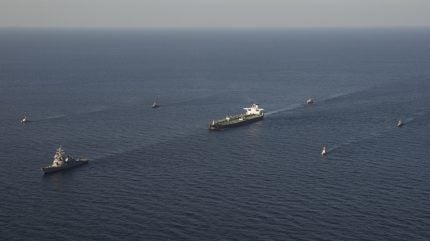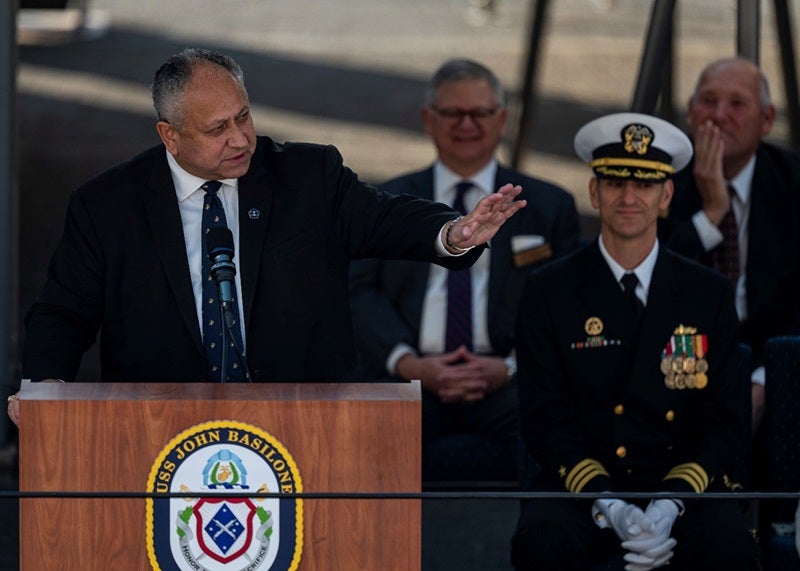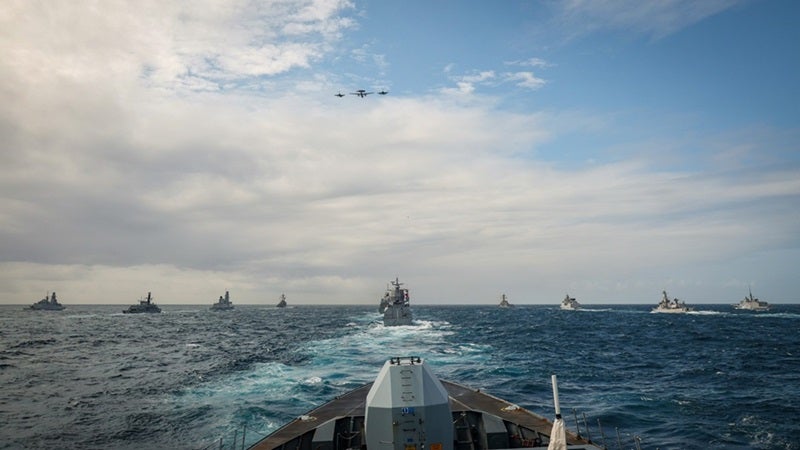
America is losing clout in the maritime sector, and US President Donald Trump issued an executive order to remedy the country’s strategic failures on 9 April 2025.
The policy will scale up the shipbuilding sector; implement financial incentives; engage with allies and partners; and impede China’s systematic investment in global maritime and port infrastructure among other measures.
It must be understood that commercial shipping goes hand in hand with naval seapower. This rationale follows that of the nineteenth-century naval strategist, Alfred Thayer Mahan, who contends that trade leads to the growth of seapower, which stimulates the development of the means of transport and protection.
This involves the domination of sea routes and global accessibility. These forms of strategic dominance are currently at risk in a bipolar world carved up into spheres of influence, particularly in the Indian and Pacific Oceans where US allies in the region fall under the thumb of Chinese military aggression.
Maritime Statecraft
Trump rests blame on “decades of government neglect.” In fairness, this can also be attributed to the receding use of seapower after the Cold War. Until the resurgence of great power competition, the US and Western allies engaged in localised, largely land-based counter-insurgency operations.
In this context, seapower provided a supportive role such as logistics, littoral patrols and strikes. During Operation Iraqi Freedom, the 2003 invasion of Iraq, Arleigh Burke-class destroyers fired Tomahawk land attack cruise missiles.
While it is true that the US maritime manufacturing sector has declined, previous administrations have not overlooked the fact.

The former Secretary of the Navy, Carlos del Toro, serving under the previous Biden administration, unveiled a new Maritime Statecraft in a speech at Harvard in October 2023. Del Toro’s doctrine was established on Mahan’s reasoning that “history proves that, in the long run, there has never been a great naval power that wasn’t also a maritime power.”
Essentially, this broad strategy sought to cultivate a whole-of-government approach to build up maritime supremacy, and regain the initiative in its geostrategic rivalry with China.
After Trump entered office for his second term, the National Defense Transportation Association, a US-based educational organisation, warned the government against uprooting all of the previous government’s policies enshrined in Maritime Statecraft.
While the new executive order puts forward a set of preliminary guidelines more than a comprehensive strategy, it is worth examining the changes and continuity to come.
Incentive model
Under section 10, the executive order proposes a Shipbuilding Financial Incentives Program.
A breathless domestic defence industry has fallen behind in the production of warships and submarines for the Navy. This is due to several reasons including shortages in experienced workforce and yard capacity.
“You can’t be asking for the American taxpayer to make greater public investments.”
Former Navy Secretary, Carlos del Toro
The creation of an incentives scheme for private investors is a slight change from the measures pursued by Biden and Del Toro. The former President had offered regular cash injections, directly helping companies to modernise their infrastructure under the Shipyard Infrastructure Optimisation Program. Whereas, Trump’s incentives scheme appears to provide support on an indirect basis.
Del Toro, when he served as Secretary of the Navy, criticised industry chiefs for their their focus on profits over revitalising infrastructure directly.
“Many of you are making record profits,” Del Toro observed, addressing naval industry leaders in February 2024. “You can’t be asking for the American taxpayer to make greater public investments while you continue to goose your stock prices through stock buybacks.”
Leaning on allies and partners
A central part of the government’s plan is to work with allies and partners to reduce dependence on adversaries, namely China.
According to recent findings, the White House determined that the United States constructs less than one percent of commercial ships globally, while China is responsible for producing more than half.

The executive order, in section eight, tasks the Secretary of Commerce to deliberate “on all available incentives to help shipbuilders domiciled in allied nations partner to undertake capital investment in the United States.”
Calling on allies and partners to cohere with US trade policies, while simultaneously hounding them in a debilitating trade war, will prove a difficult task. Especially when the European Commission is preparing to return the 20% tariffs imposed on them if a deal cannot be struck by the next quarter.
Nevertheless, there has been some success with allies to boost American seapower. The US government, even under Trump, has begun to lean on foreign shipyards, such as Hanwha Ocean’s Geoje yard in South Korea, to maintain US Navy vessels.






